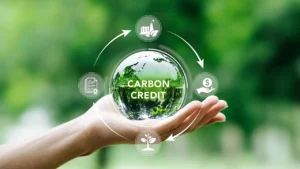Business leaders face the challenging task of overcoming ESG backlash and making their sustainability efforts meaningful in 2024. There will be an increased emphasis on developing scalable models for renewable energy production and encouraging circular material use to meet emissions reduction goals. Continued pressure from investors will prompt us to provide disclosures regarding carbon-neutral operations. Read on for 10 Sustainable Finance Trends to Watch This Year.
1. Technological Innovation
As the global community addresses climate change, it has become imperative to incorporate environmental, social, and governance (ESG) considerations into financial decision-making. This trend has resulted in innovation throughout the sustainability industry: green bonds and sustainability-linked loans to integrating ESG considerations into capital market strategy and using technology for transparency.
Investors increasingly look for companies to report on sustainability and environmental impact, with this often including reporting under frameworks such as TCFD, SASB standards, or Integrated Reporting (IR). Furthermore, AI-enabled ESG analytics and blockchain asset tracking increase transparency, giving rise to a new breed of sustainable investors looking for opportunities that align with their values.
2. ESG Backlash
Companies have many compelling business reasons to prioritize ESG issues, with sustainable strategies helping boost brand recognition, attract talent, and boost profitability. But ESG initiatives that do not align with an organization’s core strategy could backfire and cause irreparable damage.
Asset managers and major banks have recently begun withdrawing support for ESG-related shareholder proposals and withdrawing from the net-zero banking coalition, while rising interest rates have hurt clean energy stocks and other ESG investments. Furthermore, President Trump’s administration has initiated steps that have undermined ESG policies by withdrawing from the Paris Agreement and undoing Biden-era green industrial initiatives.
3. Climate Change
As global warming sets record temperatures, investors are increasingly calling on businesses to prioritize environmental sustainability. To meet this need, many forward-looking firms have developed initiatives such as green bonds, loans, and sustainability-linked loans in order to link environmental responsibility with financing.
Sustainable financial instruments have proliferated rapidly over recent years, creating an exponential cycle as more capital is put toward ESG-compliant investments that further global sustainability goals. Chile recently saw its inaugural sustainability-linked bond issued, with interest tied directly to environmental and social impact targets—providing vital financing solutions for energy-efficient homes, low-emission cars, and other eco-friendly purchases. 3 This type of financing may even make payments towards energy bills easier!
4. Regenerative Finance
Sustainable finance refers to any form of financing that takes environmental, social, and governance (ESG) factors into consideration. This can include loans and investments that support renewable energy, companies that adopt diversity and equity practices, and initiatives aimed at mitigating ESG risks.
Regenerative finance (ReFi) is an emerging approach for harnessing financial capital to create economic systems that enhance, rather than deplete, natural resources. ReFi embraces holistic systems thinking and incorporates grassroots perspectives, so projects meet real needs instead of speculation by investors. ReFi also uses blockchain technology for automated impact tracking and transparency, enabling decentralized lending/borrowing arrangements.
5. Social Impact
As demand for sustainable investing grows, so too will the number of finance professionals with ESG and sustainability expertise increase. Furthermore, this sector may spur demand for renewable sources like solar power.
Consumers increasingly expect tangible, verifiable change from businesses they support, making embracing social impact not just an ethical imperative but an invaluable chance to increase consumer trust and foster brand loyalty.
6. Diversity & Inclusion
2024 will see an increased investment in diversity and inclusion as one of the primary sustainable finance trends, because reaching equal outcomes requires acknowledging people have different circumstances, histories, needs, and requirements compared with one another. Furthermore, progress toward sustainability and social justice cannot be realized if some groups remain excluded.
Green bonds, sustainability-linked loans, and ESG-themed exchange-traded funds remain at the core of capital markets in 2025; however, new instruments like biodiversity-linked bonds that use proceeds for funding environmental projects while their interest rate ties directly into biodiversity targets are emerging as an effective means for financing environmental efforts.
Such innovations serve to bridge the gap between sustainability aspirations and financial reality, providing resources for less sustainable sectors to transition. Furthermore, they align with global initiatives like the Kunming-Montreal Global Biodiversity Framework that establish targets for nature-positive results.
7. Regulatory Change
Sustainable finance firms are taking advantage of new tools to collect and analyze ESG data to identify opportunities for responsible investments. Investor activism remains at the core of ESG integration, pushing companies to meet ambitious sustainability targets and holding them accountable via proxy battles or public campaigns by activist shareholders who push them into adopting more stringent sustainability benchmarks.
Research indicates that companies that prioritize sustainability tend to experience fewer operational disruptions and financial risks than their non-sustainable counterparts, making environmentally friendly businesses an attractive investment choice for conscientious investors and consumers. It can also help mitigate climate change impacts on customers and communities.
8. Innovation
Last year was an eventful one in terms of corporate sustainability policy and corporate finance. Europe saw progress with their regulatory agenda, while in America, ESG critics continued their assault, even with political support mobilizing trillions in green investments.
Within this climate of uncertainty, demand for sustainability skills among financial enterprises and banks has skyrocketed. An increase in ESG professionals and sustainability-focused finance departments at companies demonstrates this. Transition finance, which bridges the gap between ESG ideals and reality within browner industries, is increasingly popular with sustainability-linked loans that incentivize borrower ESG ratings.
9. Resilience
Researchers define resilience as the ability to restore functionality following disruption. Individuals who demonstrate resilience possess an ability to adapt quickly to changed circumstances and develop mindsets that help them overcome challenges, as well as cognitive resources such as emotional regulation skills and problem-solving techniques to cope with distress effectively.
Resilient individuals can find strength in hope during times of hardship by cultivating an inner sense of purpose that reminds them there is meaning behind life despite chaos, brutality, stress, or worry. Sustainable finance continues to enjoy increased policy tailwinds as a result of regulatory changes, investor demand, and government initiatives that promote green investments. The increasing popularity of social impact bonds, green bonds, sustainability-linked loans, and ESG mutual funds demonstrates this trend.



